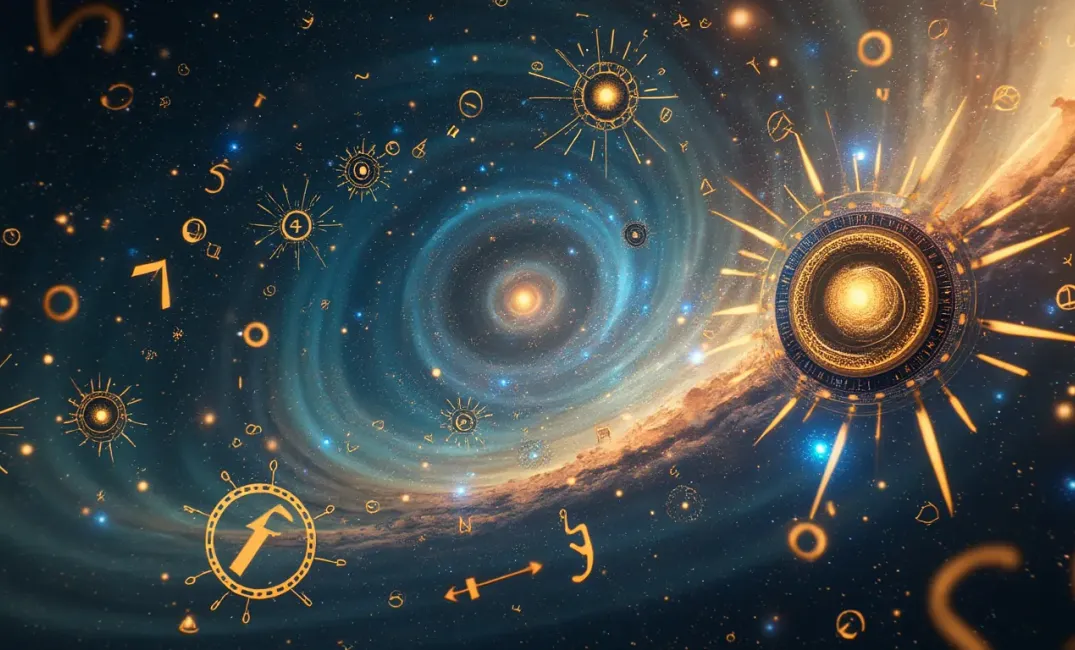Introduction: The Universal Language of Numbers
"Mathematics is the music of reason." — *James Joseph Sylvester*
Mathematics stands as the silent architect of human understanding, weaving a universal language that explains phenomena beyond the limits of human perception. As humanity ventured into the realms of discovery, mathematics emerged as an essential tool, enabling insights into ourselves and the universe we navigate. From its primordial roots in counting and measurement to the abstraction of infinity and the intricacies of quantum fields, mathematics has been a steadfast companion in humanity’s journey of exploration, innovation, and survival. This entry explores the evolution and impact of mathematics, highlighting its indelible imprint on human knowledge and its pivotal role in illuminating the cosmos.
The Birth of Mathematics: From Counting to Complexity
The Primitive Origins
- The Dawn of Enumeration: Early humans utilized basic counting techniques, such as tally marks and simple tools, to manage commerce, agriculture, and social organization. These rudimentary systems laid the groundwork for the quantified perception of the world.
- Early Mathematicians: Civilizations such as the Babylonians and Egyptians began formalizing mathematics, with innovations in geometry and algebra addressing practical needs—constructing monumental architecture, navigating celestial bodies, and enhancing trade.
The Mathematical Renaissance
- Greek Geometric Elegance: The Greeks pursued mathematics with philosophical zeal, with figures like Euclid and Pythagoras establishing axiomatic systems that elevated mathematics to a study of abstract truths. Their works enriched logic and inspired centuries of inquiry.
- Hellenistic Triumphs and Roman Pragmatism: Hellenistic mathematics advanced with Archimedean wisdom, exploring volumes, weights, and levers. Roman engineers adopted these concepts pragmatically to forge aqueducts, roads, and infrastructure, binding theory with utility.
The Flourishing of Mathematical Thought
Advances in the Islamic Golden Age
- Algebraic Pioneers: Islamic scholars embraced mathematics as a divine language, cultivating algebra’s formalization and numerical notation systems, with luminaries like Al-Khwarizmi guiding the West’s numerological evolution.
- Transcending Boundaries: Mathematics thrived amidst the confluence of cultures within Islamic empires. Establishments like the House of Wisdom translated and preserved Greek and Indian knowledge, enriching mathematical discourse with insights into trigonometry, optics, and astronomy.
The European Enlightenment and Beyond
- Renaissance Resurgence: The Renaissance spurred mathematical blossoms, lighting Europe’s path from medieval obscurity. Texts revived Ptolemaic and Archimedean ingenuity, fostering traditions of inquiry that birthed calculus through Newton and Leibniz’s collaborative genius.
- Mathematics and Scientific Revolution: Mathematics became the linchpin of science, forging new paradigms through precise articulation. The scientific revolution’s strides in mechanics and astronomy inspired profound interpretations of the universe, elevating mathematics as the cosmos’s vocabulary.
The Modern Mathematical Revolution
Bridging Theory and Application
- Chaos and Complexity: The 20th century unraveled the complexities of chaos theory and its implications. Mathematicians explored dynamic systems’ unpredictability, cementing mathematics as essential to ecological studies, financial modeling, and technological advancements.
- Quantum Revelations: Mathematics uncovered quantum mechanics’ counterintuitive worlds, providing probabilistic frameworks fundamental to comprehending particles and energy at the microscopic scale, redefining reality’s understanding.
The Digital and Computational Age
- Algorithm Ascendancy: Algorithms emerged as mathematics incarnate, fueling the rise of computer science from humble beginnings to the nerve center of modern life. They power genomics, data science, artificial intelligence, and revolutionize industries across the globe.
- Cryptography and Security: Mathematics underlies the bedrock of digital communication. Cryptography guards privacy and security in an interconnected world, relying on prime numbers and computational hardness to protect vital information.
Mathematics Across Disciplines and Cultures
Art and Aesthetic Resonance
- Symmetry and Proportion: Mathematics infuses art with harmony through Fibonacci sequences, fractals, and golden ratios. Architects and artists synchronize their works with mathematical precision, forging balances inspired by nature’s intrinsic patterns.
- Music’s Mathematical Core: Harmonies and rhythms materialize from numerical principles, with mathematics composing music’s hidden symphony. Understanding acoustics and resonance enriches music theory, echoing universality through sound.
Ethnomathematics and Human Diversity
- Cultural Expressions: Ethnomathematics reveals diverse mathematical traditions among cultures, validating unique approaches to space, quantity, and logic. Indigenous and ancient methods contribute to a kaleidoscope of mathematical thought across continents and centuries.
- Mathematics as Human Collaboration: Mathematics embodies global human heritage, with collaborative endeavors bridging civilizations. Its cross-cultural dialogue fosters collective advancement, embracing traditions to forge shared intellectual futures.
The Future of Mathematics: Expanding Horizons
Mathematics and Sustainability
- Modeling the Earth: Leveraging complex mathematical models informs sustainable resource management and climate science, offering strategies to navigate global challenges and promote ecological balance.
- Innovations in Materials: Mathematics drives advancements in materials science, optimizing designs for durability and efficiency. Predictive analytics enable the creation of sustainable solutions, advancing infrastructure and technology.
Beyond Terrestrial Frontiers
- Cosmic Comprehensions: Mathematics paves pathways to cosmic understanding, deciphering celestial mechanics and gravitational waves. It is integral to humanity’s quest to explore and inhabit interstellar realms, enhancing space technology’s evolution.
- Artificial Intelligence’s Mathematical Core: AI systems rely on mathematical algorithms that emulate learning, adaptability, and reasoning. Mathematics nurtures the AI revolution, with ethical considerations shaping its integrated future with humankind.
Conclusion: Mathematics as the Universal Harmony of Mind and Cosmos
"Mathematics knows no races or geographic boundaries; for mathematics, the cultural world is one country." — *David Hilbert*
The symphony of mathematics resonates through the core of human civilization—an eternal dance between abstract beauty and practical necessity. Mathematics transcends boundaries, guiding humanity through thought, innovation, and cosmic exploration. Its legacy illuminates our shared pursuit of truth and understanding, empowering generations to navigate the mysteries of life and the universe.
As the voyage of humankind extends beyond Earth, mathematics remains the compass guiding our destiny. It continues to inspire, provoke curiosity, embody elegance, and foster connectivity across cultures and ages—a universal harmony uniting all of existence.
In preserving this mosaic of mathematical thought and exploration, humanity ensures enduring legacy and pursuit of knowledge, inspiring the integration of intuition and intellect as we journey further into the cosmos.
TECHNOLOGY, SCIENCE, ART, CULTURE, MATHEMATICS, HISTORY, EXPLORATION, UNIVERSE, INNOVATION, SUSTAINABILITY

